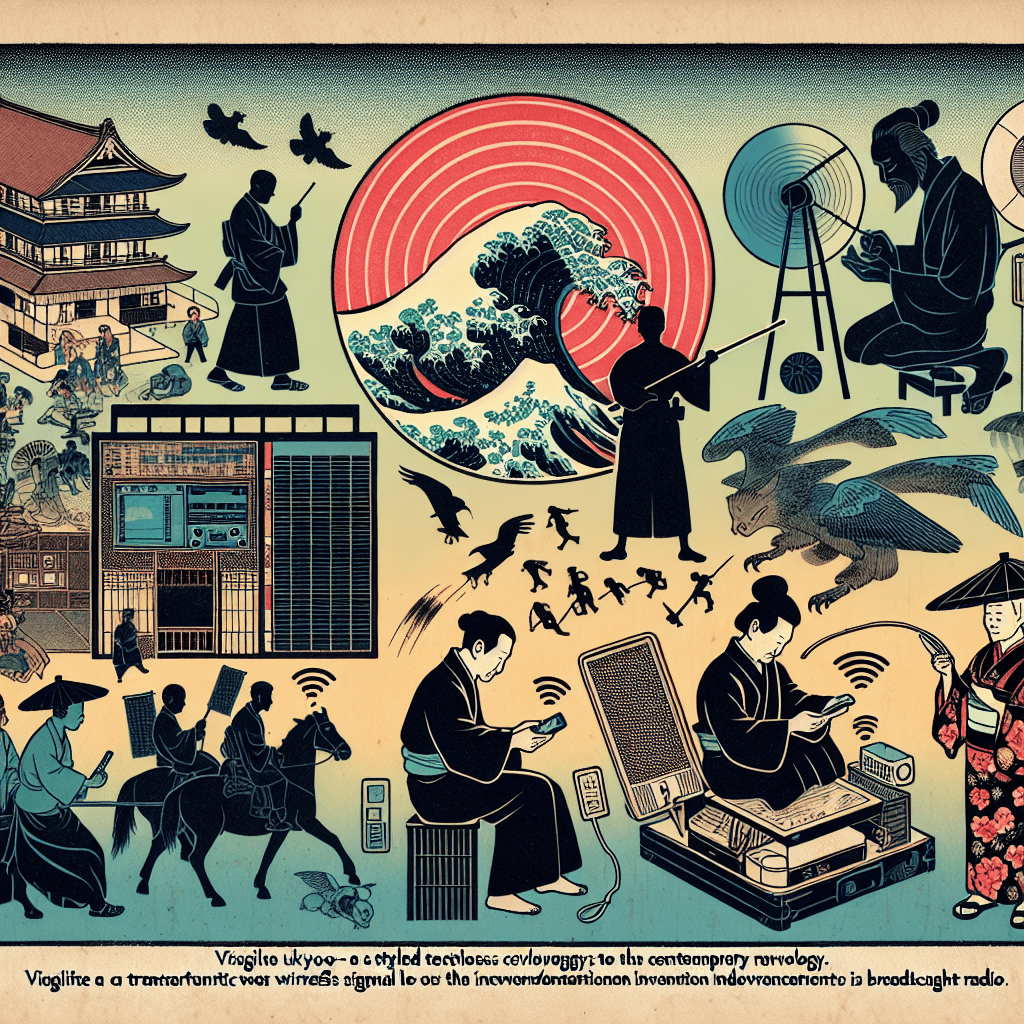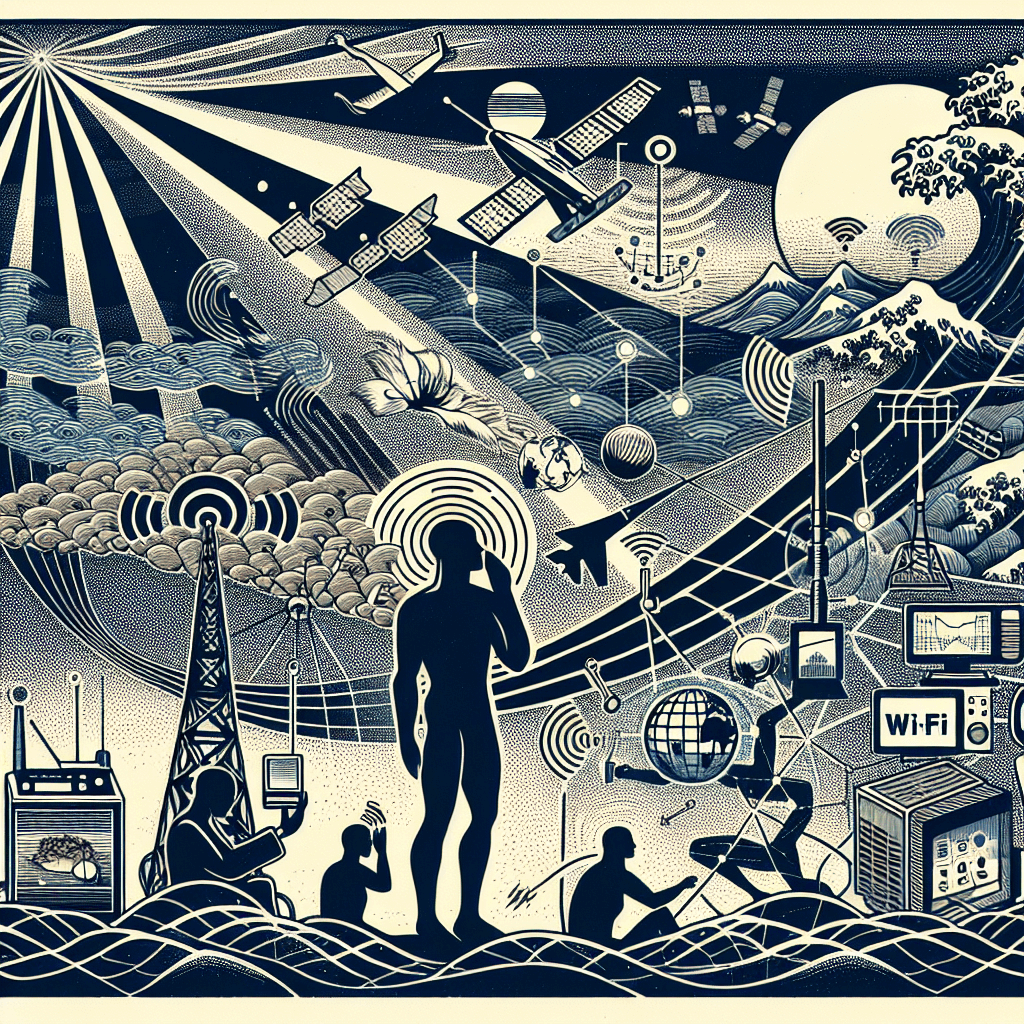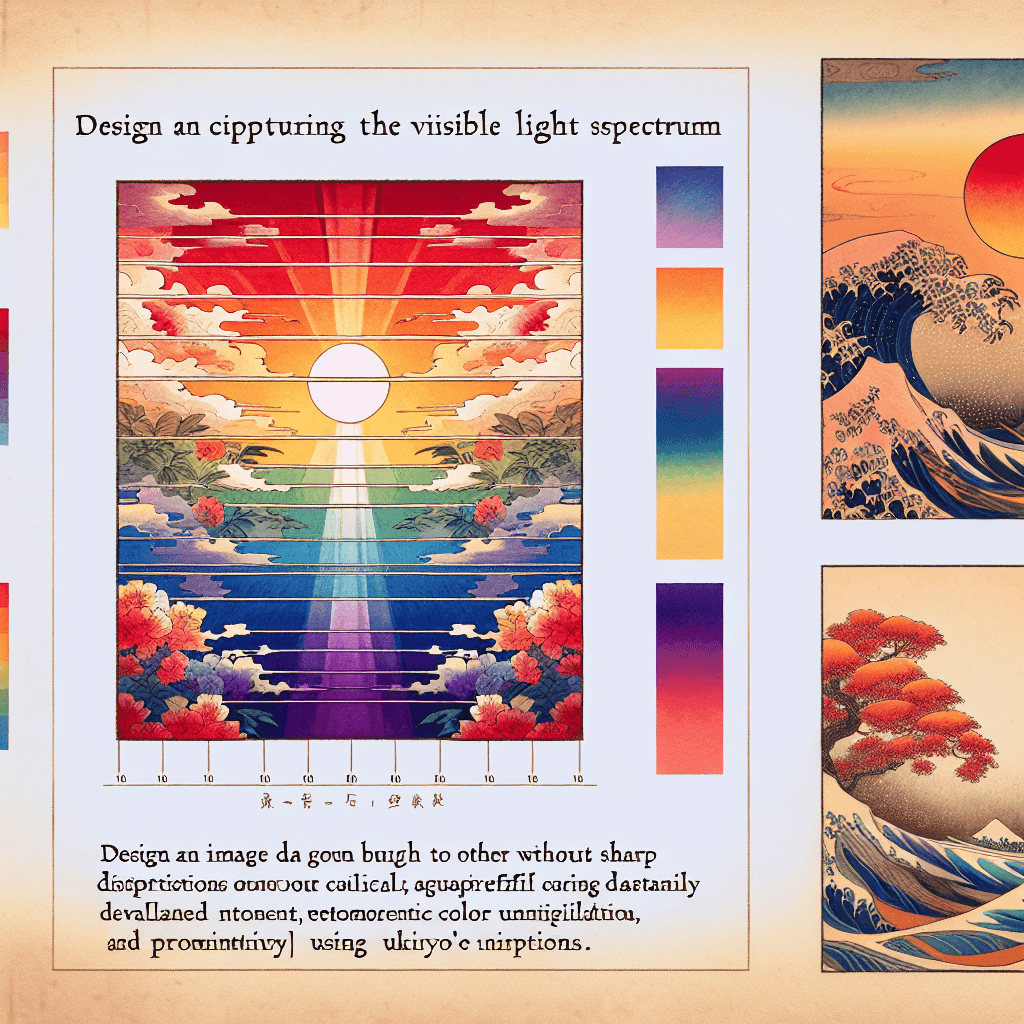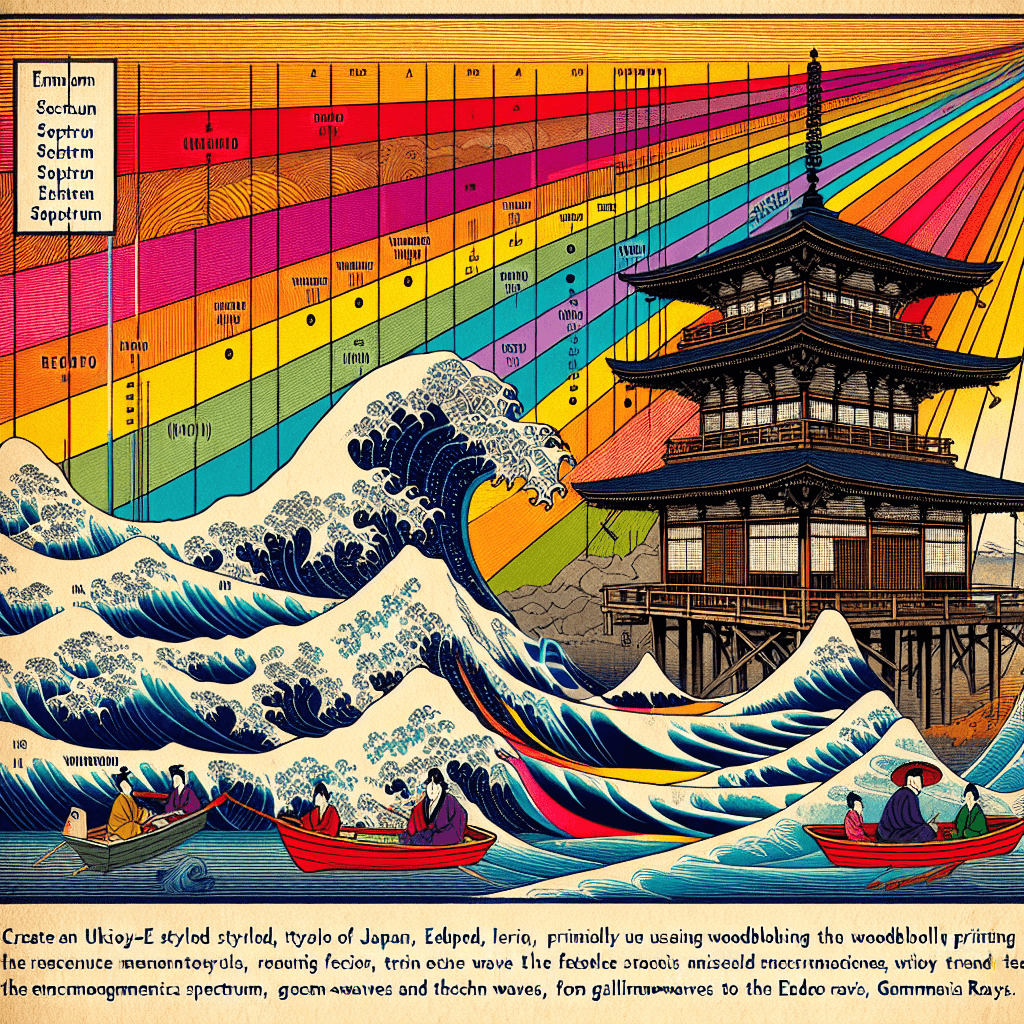The Electromagnetic Spectrum: A Journey Through the Invisible Waves
syndu | Sept. 7, 2024, 12:17 p.m.
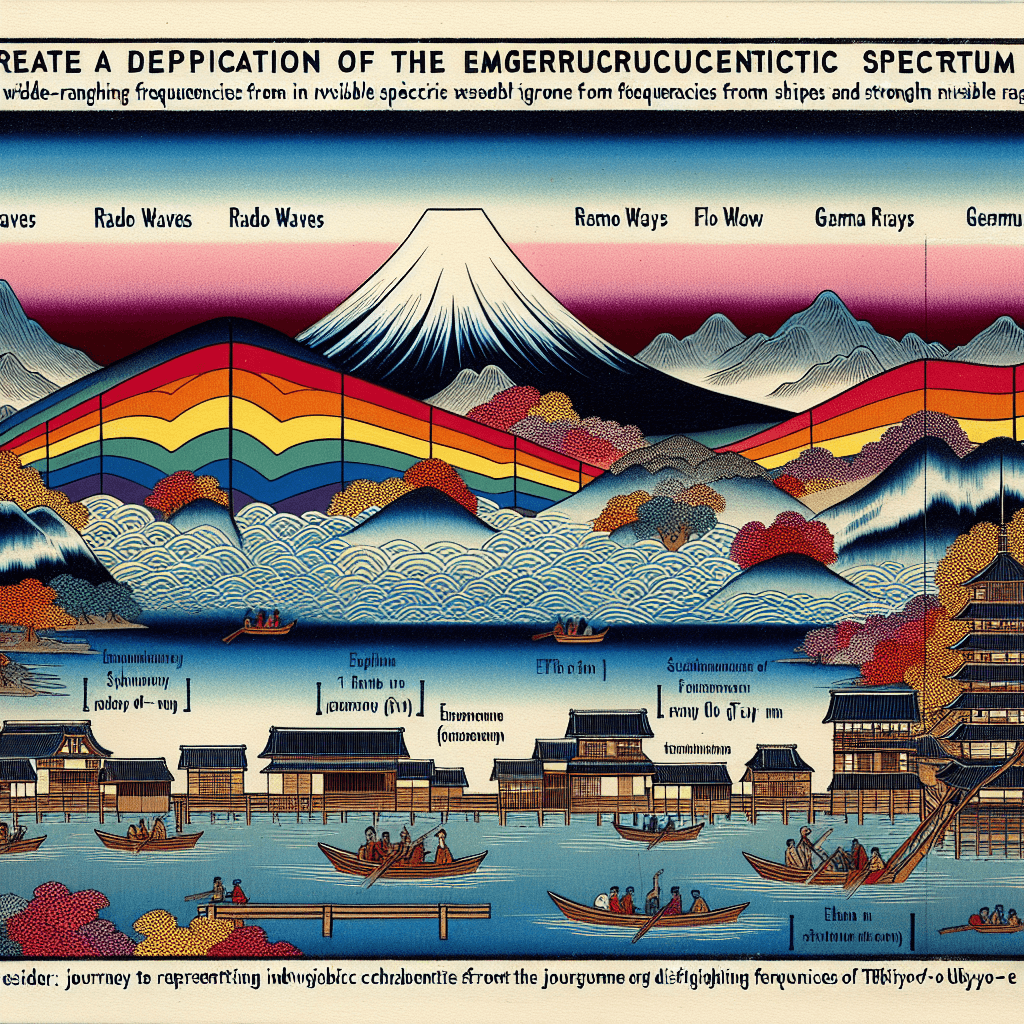
The Electromagnetic Spectrum: A Journey Through the Invisible Waves
Introduction
The electromagnetic spectrum encompasses a range of electromagnetic waves, each with unique properties and applications. From the longest radio waves to the shortest gamma rays, these waves play a crucial role in modern technology and scientific discovery. In this series, we will explore each segment of the electromagnetic spectrum, highlighting historical context, key figures, technological advancements, practical applications, and significant milestones.
Radio Waves: The Longest Waves
Historical Context and Key FiguresRadio waves were first discovered by German physicist Heinrich Hertz in the late 19th century. Hertz's experiments demonstrated the existence of electromagnetic waves, laying the foundation for the development of wireless communication.
Technological Advancements- Early 20th Century: Guglielmo Marconi's pioneering work in radio transmission led to the first transatlantic radio signal in 1901.
- Mid-20th Century: The development of radar technology during World War II revolutionized military strategy and technology.
- Communication: Radio waves are used in broadcasting, mobile phones, and satellite communication.
- Navigation: GPS systems rely on radio waves to provide accurate location data.
- Astronomy: Radio telescopes observe celestial objects, providing insights into the universe.
- 1901: Marconi's first transatlantic radio signal.
- 1940s: Development of radar technology.
“Radio waves were first discovered by German physicist Heinrich Hertz in the late 19th century. Hertz's experiments demonstrated the existence of electromagnetic waves, laying the foundation for the development of wireless communication.”
Microwaves: The Invisible Waves in Our Daily Lives
Historical Context and Key FiguresMicrowaves were first demonstrated by Heinrich Hertz in the late 19th century. The practical applications of microwaves emerged during World War II with the development of radar technology by Sir Robert Watson-Watt and his team.
Technological Advancements- 1940s: Development of radar systems for military use.
- 1960s: Introduction of microwave ovens for quick and efficient cooking.
- Communication: Microwaves are used in satellite communication, Wi-Fi, and Bluetooth technologies.
- Cooking: Microwave ovens heat and cook food quickly and efficiently.
- Medical Applications: Microwaves are used in diathermy and microwave imaging.
- 1940s: Development of radar technology.
- 1967: Introduction of the first commercial microwave oven.
Infrared Radiation: The Invisible Heat Waves
Historical Context and Key FiguresInfrared radiation was discovered by British astronomer Sir William Herschel in 1800. Herschel's experiments revealed the existence of invisible radiation beyond the red end of the visible spectrum.
Technological Advancements- 19th Century: Herschel's discovery of infrared radiation.
- 20th Century: Development of infrared cameras and sensors.
- Remote Controls: Infrared radiation is used in remote controls for electronic devices.
- Thermal Imaging: Infrared cameras detect heat patterns for medical diagnosis and surveillance.
- Communication: Infrared radiation is used in fiber optic communication.
- 1800: Herschel's discovery of infrared radiation.
- 1960s: Development of infrared cameras.
Visible Light: The Spectrum We See
Historical Context and Key FiguresThe study of visible light dates back to ancient civilizations, but significant advancements were made by Sir Isaac Newton in the 17th century. Newton's experiments with prisms revealed that white light is composed of different colors.
Technological Advancements- 17th Century: Newton's experiments with prisms.
- 20th Century: Development of various lighting technologies, including incandescent bulbs, fluorescent lamps, and LEDs.
- Illumination: Visible light is used in various lighting technologies.
- Communication: Fiber optic communication relies on visible light.
- Medical Applications: Endoscopy and phototherapy use visible light for diagnosis and treatment.
- 1666: Newton's experiments with prisms.
- 20th Century: Development of modern lighting technologies.
Ultraviolet Radiation: The Invisible Rays Beyond Violet
Historical Context and Key FiguresUltraviolet radiation was discovered by German physicist Johann Wilhelm Ritter in 1801. Ritter's experiments revealed the existence of invisible radiation beyond the violet end of the visible spectrum.
Technological Advancements- 19th Century: Ritter's discovery of ultraviolet radiation.
- 20th Century: Development of UV sterilization and phototherapy techniques.
- Medical Applications: UV radiation is used for sterilization and phototherapy.
- Scientific Research: UV spectroscopy analyzes the composition of substances.
- Environmental Monitoring: UV radiation monitors the ozone layer.
- 1801: Ritter's discovery of ultraviolet radiation.
- 20th Century: Development of UV sterilization techniques.
X-Rays: The Invisible Rays That See Inside
Historical Context and Key FiguresX-rays were discovered by German physicist Wilhelm Conrad Roentgen in 1895. Roentgen's experiments revealed the existence of invisible rays that could penetrate solid objects.
Technological Advancements- 19th Century: Roentgen's discovery of X-rays.
- 20th Century: Development of X-ray imaging and CT scans.
- Medical Imaging: X-rays are used in diagnostic imaging and CT scans.
- Security: X-rays are used in security scanners at airports.
- Scientific Research: X-ray crystallography studies the structure of molecules.
- 1895: Roentgen's discovery of X-rays.
- 1970s: Development of CT scans.
Gamma Rays: The Most Energetic Waves
Historical Context and Key FiguresGamma rays were discovered by French physicist Paul Villard in 1900. Villard's experiments revealed the existence of highly penetrating radiation emitted by radioactive materials.
Technological Advancements- 20th Century: Villard's discovery of gamma rays.
- 20th Century: Development of gamma-ray telescopes and radiotherapy techniques.
- Medical Applications: Gamma rays are used in radiotherapy to treat cancer.
- Scientific Research: Gamma-ray telescopes observe high-energy phenomena in space.
- Industrial Applications: Gamma rays are used for non-destructive testing and sterilization.
- 1900: Villard's discovery of gamma rays.
- 20th Century: Development of gamma-ray telescopes and radiotherapy techniques.
Conclusion
The electromagnetic spectrum is a fascinating and diverse range of electromagnetic waves, each with unique properties and applications. From radio waves to gamma rays, these waves have transformed technology, medicine, and scientific research. As we continue to explore and understand the electromagnetic spectrum, we uncover new possibilities and advancements that shape our world.
Next Steps
- Ensure each post is informative and engaging, incorporating any specific preferences or additional topics if requested.
- Confirm if there are any specific preferences or additional topics to cover.
- Maintain a structured and engaging narrative throughout the series.
Additional Notes
If you have any specific preferences or additional topics you’d like us to cover, please let us know. We’re here to make this journey as enlightening and enjoyable as possible.
Request for Feedback
We would love to hear your thoughts on this post. Are there any specific preferences or additional topics you would like us to cover in future posts? Your feedback is invaluable in helping us enhance the content and make it more engaging and informative. Please let us know in the comments below or reach out to us directly. Thank you for being part of this journey!
You can view the published post on the Electromagnetic Spectrum here.
